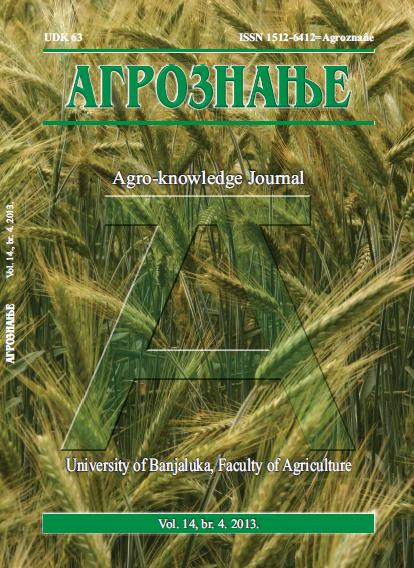Protection and Animal Welfare in Farming Practices for Milk Production in Region of Northeastern Bosnia and Herzegovina
DOI:
https://doi.org/10.7251/AGREN1304479GAbstract
The main goal of the research is to determine the conditions of welfare and housing of farm animals for milk production. Milk producers in the region of northeastern BiH are not informed enough about the protection and welfare of animals. This research was conducted in May 2012. The results were obtained on the basis of the questionnaire methodology in five freedoms in the welfare and accommodation of animals (Webster, 1987). Farms are divided into three groups, farms that have up to 5 dairy cows (they are in majority in the region), farms that have up to 20 dairy cows and farms with more than 20 dairy cows. On farms that have up to 5 dairy cows all farms posses tied system of keeping cows and cows are kept in closed conditions. Farms with up to 20 dairy cows also a large percentage of 67% related to the system of keeping cows in indoor conditions. A smaller part of the farm has a free system of keeping cows and stables open with good light and ventilation. Only 16% of farms with more than 20 dairy cows are tied housing system and the rest of the free system of keeping cows. All farms meet freedom from hunger and thirst, but the big problem is freedom from discomfort, freedom from stress and fear, freedom of injury and illness and the freedom to express natural behavior. The research was carried out within the project "Improvement of milk production in northeastern Bosnia and Herzegovina" funded by the Development Agency of the Czech Republic.Downloads
Published
2013-12-27
Issue
Section
Articles

